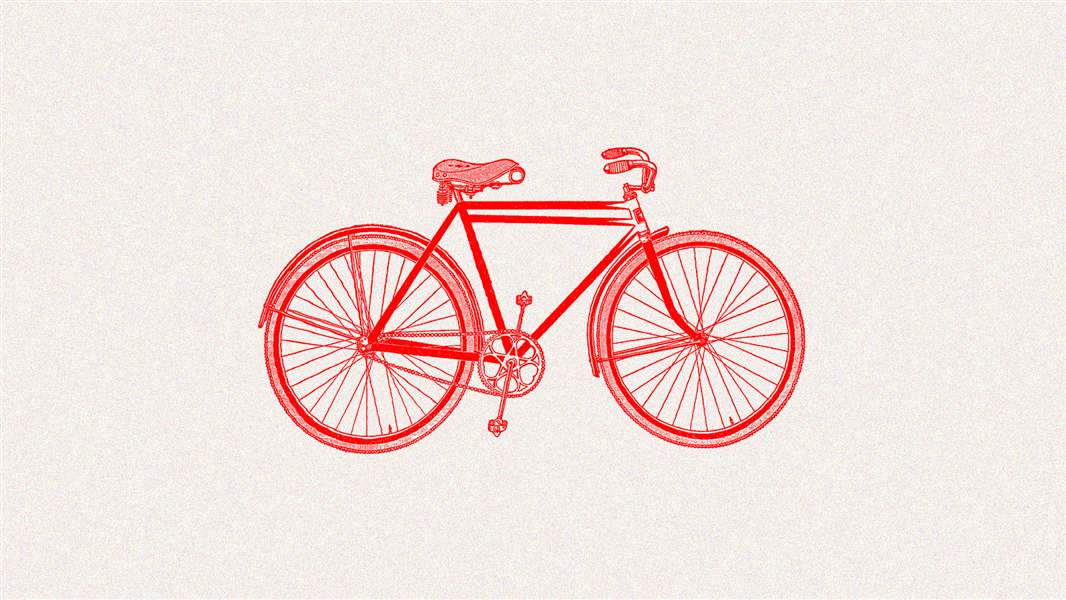
The aversion to complexity
6/1/2018
THE BLADE/WILL TOMER
Buy This Image

Will Tomer
People love black-and-white distinctions. All too often they are either for something, or against it. It is much less common for someone to come to a point somewhere in the middle, contemplating the complexities of the topic or situation. As the young Bob Dylan once wrote:
“A lot of people don’t have much food on their table. But they got a lot of forks ‘n knives. And they got to cut somethin’.”
As I thought recently about this seemingly basic human need, I turned to Ian Buruma’s 2006 book, Murder in Amsterdam: The Death of Theo van Gogh and the Limits of Tolerance, which tells the story of the murder of Mr. van Gogh, a Dutch filmmaker and provocateur.
Several months before his death in November, 2004, Mr. van Gogh, along with Somali-born Islam critic Ayaan Hirsi Ali, created a film entitled Submission. The film was a critique of how women are treated under fundamentalist Islamic law.
In the wake of the Sept. 11 attacks in the United States, tensions between the Dutch natives — well known for their liberal tolerance — and Islamic immigrants had grown. When Submission was broadcast on Dutch television, the film created an uproar in the Islamic community. Mr. van Gogh and Ms. Hirsi Ali received death threats, which Mr. van Gogh dismissed.
On Nov. 2, 2004, as Mr. van Gogh bicycled to work, he was shot and stabbed by Mohammed Bouyeri, a Dutch-Moroccan citizen and second-generation immigrant who rode his own bicycle to the crime that day. He pinned a note to Mr. van Gogh’s body that threatened to kill Ms. Hirsi Ali.
Bouyeri was apprehended, tried, and eventually sentenced to life in prison.
The case sowed the seeds of political division in the Netherlands and beyond. A “you are with us or against us” atmosphere grew. Fourteen years later, the effects are still felt as European concerns over Islamic immigration and intolerance of Western values have grown more intense, as evidenced by the increasing popularity of nationalistic parties throughout Europe.
Mr. van Gogh’s murder confirmed the worst fears of those critical of European immigration policies. Many Europeans had welcomed immigrants who turned out to be intolerant of Western values, so much so that a few of them were willing to commit acts of violence in expression of their own values.
Mr. van Gogh’s friends and supporters portrayed their fallen comrade as a martyr for the values of the Enlightenment: secularism, equality, free expression. They cast their opponents — the followers of Islam who traveled to Europe in pursuit of a better life — as tribalistic barbarians with antiquated social mores supplied by a holy book.
Mr. Buruma carefully and deftly weighed the other side of this case: What drives a young person like Bouyeri — who grew up in a secular Dutch society, casually dated, drank beer, and smoked marijuana — to suddenly radicalize?
Mr. Buruma wondered, without reaching a definitive conclusion, if Dutch society’s inability to assimilate those from cultures with different value systems has created an increased tension that foments radicalization. Mr. Buruma showed that both sides of the debate believe themselves to be in possession of a path to true enlightenment — either through European ideals or Islamic ideals, the two sides being mirrors of one another.
Geraldine Bedell, who reviewed Murder in Amsterdam for The Guardian in 2006, neatly summarized the ideological conflict at the heart of the book: “Two competing, hostile versions of absolute truth square up against each other, derived from different cultures, each with a mission to override culture and draw in the deracinated.”
RELATED: The danger of censoring objectionable ideas
Mr. Buruma is to be applauded for the prescience of his book. Murder in Amsterdam anticipated a number of significant social, cultural, and political problems plaguing Europe, the U.S., and the rest of the world to this day.
But what truly sets Murder in Amsterdam apart is how the book purposefully and skillfully deals with the ambiguities, contradictions, and complexities of the concerns at hand.
Should those who believe in Europe’s Enlightenment concede the right to criticize a religion when immigrants are free to practice any religion they so choose? Are Europeans doing enough to make those same immigrants feel as though their cultural differences are being respected? What about being a second-generation immigrant may or may not make one susceptible to radicalization? Is there a meaningful distinction between an anti-immigration fanatic on a bicycle and an Islamist fanatic on a bicycle?
Mr. Buruma is not interested in answering these questions for his readers. But what he does offer is an avenue to consider that things are rarely as simple as they seem.
In Murder in Amsterdam, black-and-white situations do not exist. Almost every person, institution, and idea is riddled with contradictions, flaws, and complexities. The world is a much simpler place for those who see things in terms of right and wrong, good and evil, black and white. But as Mr. Buruma illustrates so well, the tendency to view problems in starkly defined, binary terms is a way of avoiding reality or dealing cogently with it.
Mr. Buruma, the thoughtful reporter and essayist that he is, recognizes that hard-liners, whether they are religious fundamentalists or European supremacists, do little more than sow division and discontent, fueling cycles of increasingly hostile and divisive action.
The best minds — those who embrace the ambiguities of a given debate — know how to blend logic and reason with emotion and subjective values. Pragmatism need not come at the expense of empathy, and one be can thoughtful about a topic to the point of being passionate without being naive.
But don’t tell that to the demagogues working on cable news networks or through hyper-partisan blogs. Their business model rests squarely on the tensions that have been expanded and exploited since Theo van Gogh’s death.
Things are rarely as simple as they are presented to us nowadays — whether on social media, in soundbites on TV, or elsewhere — and readers would be well served to not only read Mr. Buruma’s book, but apply its principles of thoughtful examination and consideration to the many issues that confront us today.
Mr. Buruma concluded Murder in Amsterdam on an optimistic note, hoping that reason, civility, and thoughtfulness will win the day. But, nearly 12 years later, I can’t help but feel that Mr. Buruma may be feeling a bit more pessimistic, given that the aversion to grappling with the complexities of important social and cultural problems seems greater than ever.
Whither Dylan? He hasn’t been heard from lately, but he might well observe that the forks and knives are more plentiful than ever.
Contact Will Tomer at wtomer@theblade.com, 419-724-6404, or on Twitter @WillTomer.